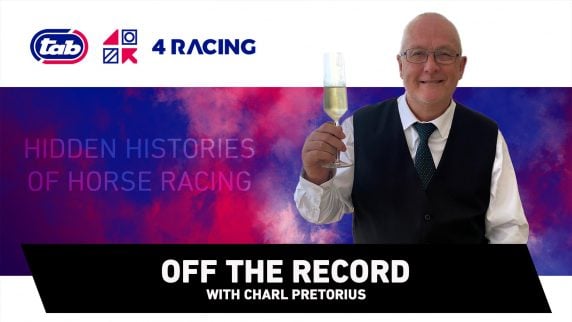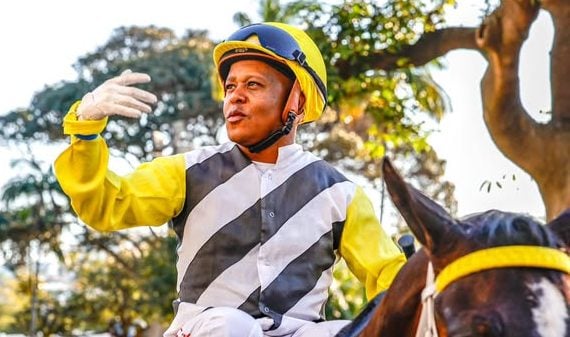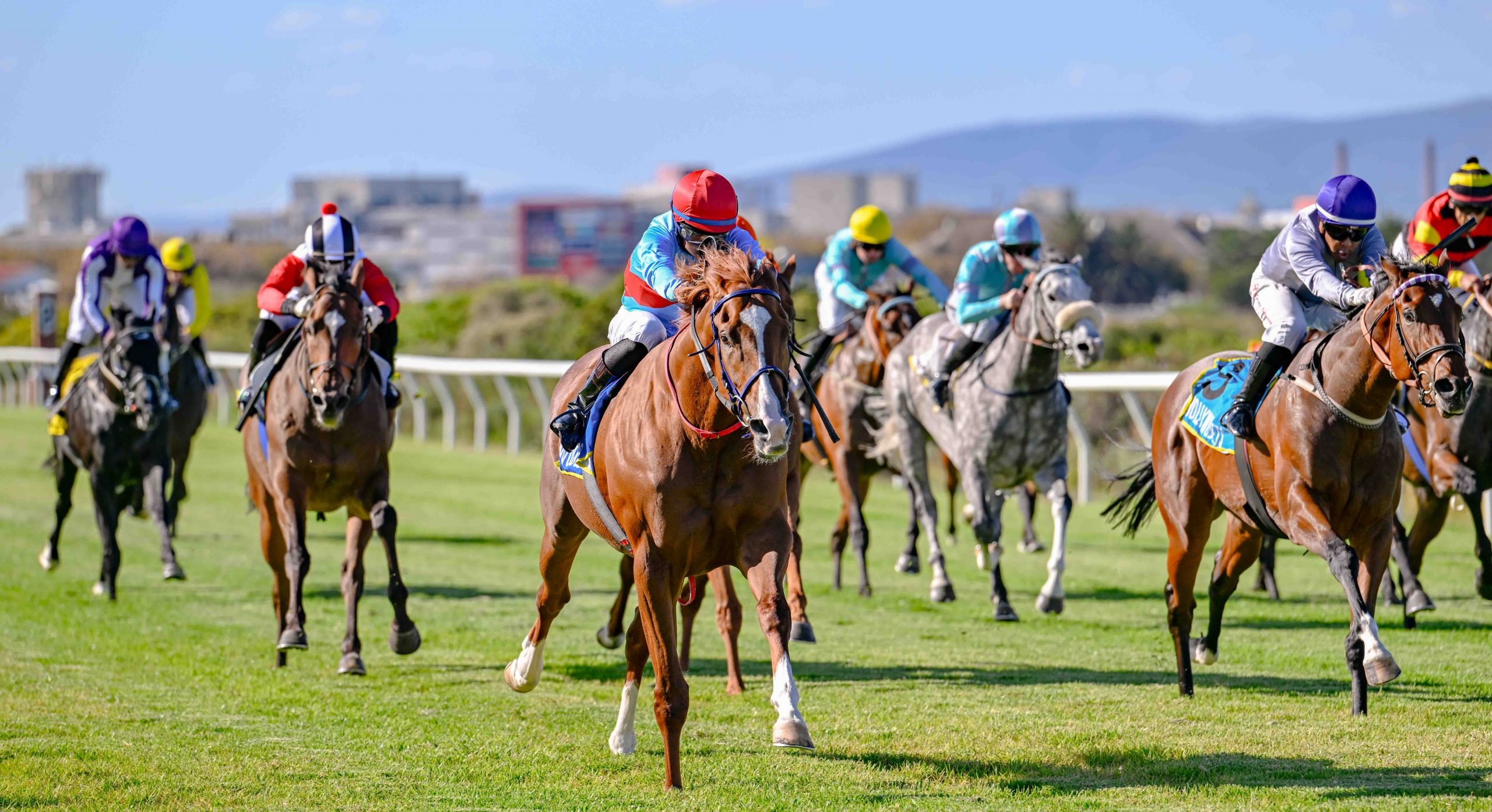“South African horses are by nature very tough,” enthused trainer Graham Motion after Isivunguvungu won the Listed Da Hoss Stakes over 1100m at Colonial Downs on Saturday 8 September.
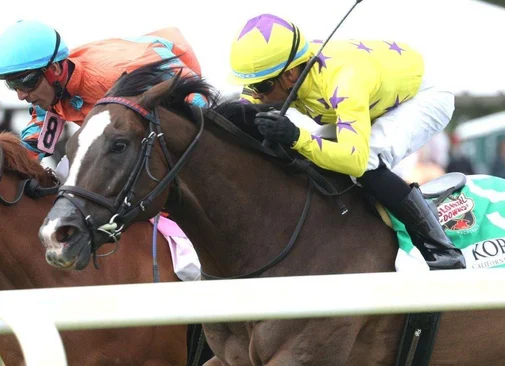
Isivunguvungu wins the Da Hoss Stakes (Pic – TDN)
The Da Hoss, named after a strong and courageous gelding who overcame a number of physical problems on his way to winning two Breeders Cup Miles, is considered a pointer to the prestigious G1 Breeders’ Cup Sprint on Saturday, 2 November at Del Mar.
Isivunguvungu was raised at John Everett’s Narrow Creek Stud in the Wolseley district of the Western Cape, where icy breezes sweep down from snow-capped mountain peaks in winter, and the young horses grow up facing the raw challenges of nature, without any mollycoddling.
This philosophy made old-school breeders like the Birch Brothers renowned for producing runners that could withstand the rigours of training.
Everett echoed this approach, stating: “We leave them out there, come rain, shine, or even snow. They’re only stabled about eight weeks before heading to the sales.”
Narrow Creek has been a Top 10 contender on the breeders’ log for the last six seasons and the latest news is that Isivunguvungu’s dam, Miss Tweedy (Tiger Ridge) has been sent to Ridgemont Stud to be covered by Captain Al’s Triple Crown-winning son, Malmoos.
Motion, meanwhile, is confident that Isivunguvungu will make the final field of the Breeders’ Cup Turf Sprint, with or without a further preparation run into the race.
He said: “This is a very special horse. He spent two months in quarantine. I think we are going to see a lot more (South African horses), coming in.”
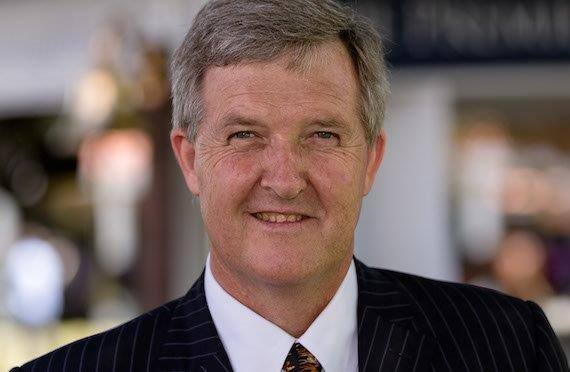
Robin Bruss (Pic – Hamish Niven Photography)
Industryman Robin Bruss, alongside shipper Gerard Connolly, engineered the 11 horse USA consignment including Isivunguvungu on behalf of the Hollywoodbets Syndicate, Team Valor’s Barry Irwin and Gaynor Rupert’s Drakenstein Stud.
He said: “The beauty of the USA direct flight is that horses can race right up to shipment time in Johannesburg, with no Free Zone constraints, let alone quarantine – Princess Calla for example, ran in the Grade 1 Horse Chestnut Stakes at Turffontein on 1 March, and four days later arrived in New York.”
Whether there will be another shipment soon, remains to be seen, as the associated costs are astronomical. The cost of flying a single horse to New York could be as high as R1-million for the flight alone.
Bruss explained: “The USA protocol has been in place since 1958 and would be a preferred system of export were it not for the high cost of chartering a Boeing to USA and a period of 60 days post arrival quarantine costing a further $17,000 per horse.”
The purpose of this first shipment, said Bruss, was bold and enterprising: to try and make a South African impact in the world’s biggest market, using a direct flight Post Arrival Quarantine (PAQ), which is accepted in the USA, rather than the burdensome Free Zone Pre-Travel Quarantine (PEQ) demanded by the European Union (EU).
There is a way to reduce the financial responsibilities for owners with horses considered good enough to race in the USA. Bruss said: “To make the charter financially economic, quantities of horses are required – the plane can take 60 horses – or freight needs to accompany the horse shipment in a split cargo. Plus, it would help if the United States Department of Agriculture (USDA) would accept an update in the 1958 protocol set down when no tests were known for African Horse Sickness (AHS) virus.”
The PCR (Polymerase Chain Reaction) test for AHS is highly sensitive and widely used in medical diagnostics. It takes four hours to complete and is considered the most stringent virus test ever devised.
According to a quantitative scientific analysis, administering three PCR tests during a 14-day lockdown quarantine, results in a risk profile of 1.6 billion to one, against any infected AHS horse passing through undetected.
Bruss said: “To provide for numbers on the flight we need to establish a market in USA. We can only do this by sending horses to race in America and having the type of success South African horses enjoyed pre 2012 when the EU’s Free Zone protocol was suspended.”
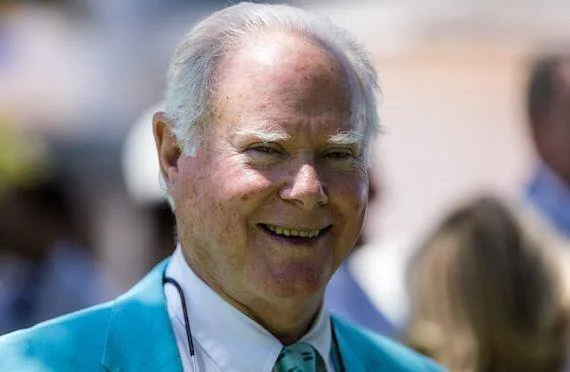
Team Valor’s Barry Irwin (Pic – Hamish Niven Photography)
Team Valor’s trailblazing Group 1 successes with South African horses globally was the feature of the first decade of this millennium. We should not be expecting more of the same, however.
Barry Irwin said that, in his view, the lack of transparency, behind-closed-doors dealing and stranglehold some veterinarians have on the export aspect of the industry continues to put South African owners and breeders at a tremendous disadvantage on the world stage.
He also described the National Horseracing Authority as remaining “mired in chaos and short-sighted petty concerns”.
Irwin said: “The export dilemma has not really been solved. The export issue pretty much sums up the major issue that will stymie the sport for a long time in South Africa. I am glad that Isivunguvungu won and Beach Bomb ran a good second, because I was involved with Robin and Gerard in putting together the flight that brought them to the United States. I had three on the same flight. I laud those owners who sent their horses on the flight for their sportsmanship, courage and commitment, but I will not be doing that ever again. I don’t think it is fair to the horses and it became way too costly.”
Bruss said that the focus of our veterinary authorities on the EU Protocol and the AHS Free Zone as the most desirable and workable system has prevented exports to the USA, and that the suspension of the EU protocol from 2012 to 2024 has crushed the global marketing of SA bloodstock.
He feels that one of the solutions would be for South African Equine Health and Export Protocols (SAEHP) to request and negotiate an amendment to the USA quarantine period to try and reduce the 60 days PAQ to 14 days. “This can be done by simply updating the science and thereby dramatically reduce the cost and time period of post arrival and therefore out of training effect on racehorses,” he noted.
Bruss said that the EU’s approach to the AHS Free Zone system is a highly flawed system which added new burdensome requirements after the initial health certificate and which may well hinder rather than enhance trade. “I would suggest a better approach is to aim for Post Arrival Quarantine (PAQ) to be negotiated with the USA and other countries who both desire SA horses and are willing to work with us in a positive stance seeking economic benefit for both sides.”
Adrian Todd, MD of SAEHP, said that he encouraged constructive engagement. “We are pleased that the first shipment to the US was successfully concluded. There is still work to be done, and this includes looking at streamlining the US protocol.”
Bruss pointed to work done in previous years by Peter Gibson and his team at the now disbanded Racing South Africa and suggested it was time we pick up the pieces.
He said: “In order to market South African horses into the USA, we need our organisations to unify behind a marketing thrust to increase export numbers, reducing logistical costs and create awareness of the product. We put our faith in horses like Isivunguvungu and Beach Bomb performing well in the Gr.1 Breeders’ Cup events and drawing global attention to our bloodstock. Other SA horses like Team Valor’s Bless My Stars, Feather Boa and Egyptian Mau are in the wings getting ready to run.”
Irwin believes that the jury remains out on whether the current crops of South African horses will make the same impact in North America that previous SAF-breds did, but US-based bloodstock adviser, Kip Elser, said that Isivunguvungu’s win could lead to bigger things. He described himself as “a believer” in SAF-breds and expects that Irwin’s new runners will do well.
Click on the image below to read the full story.


